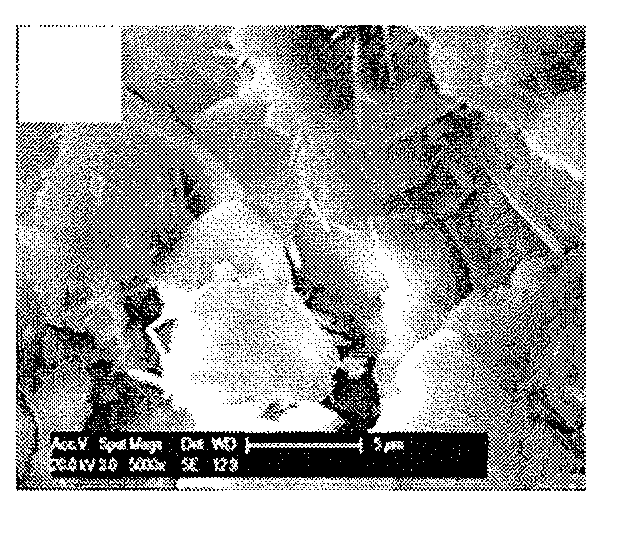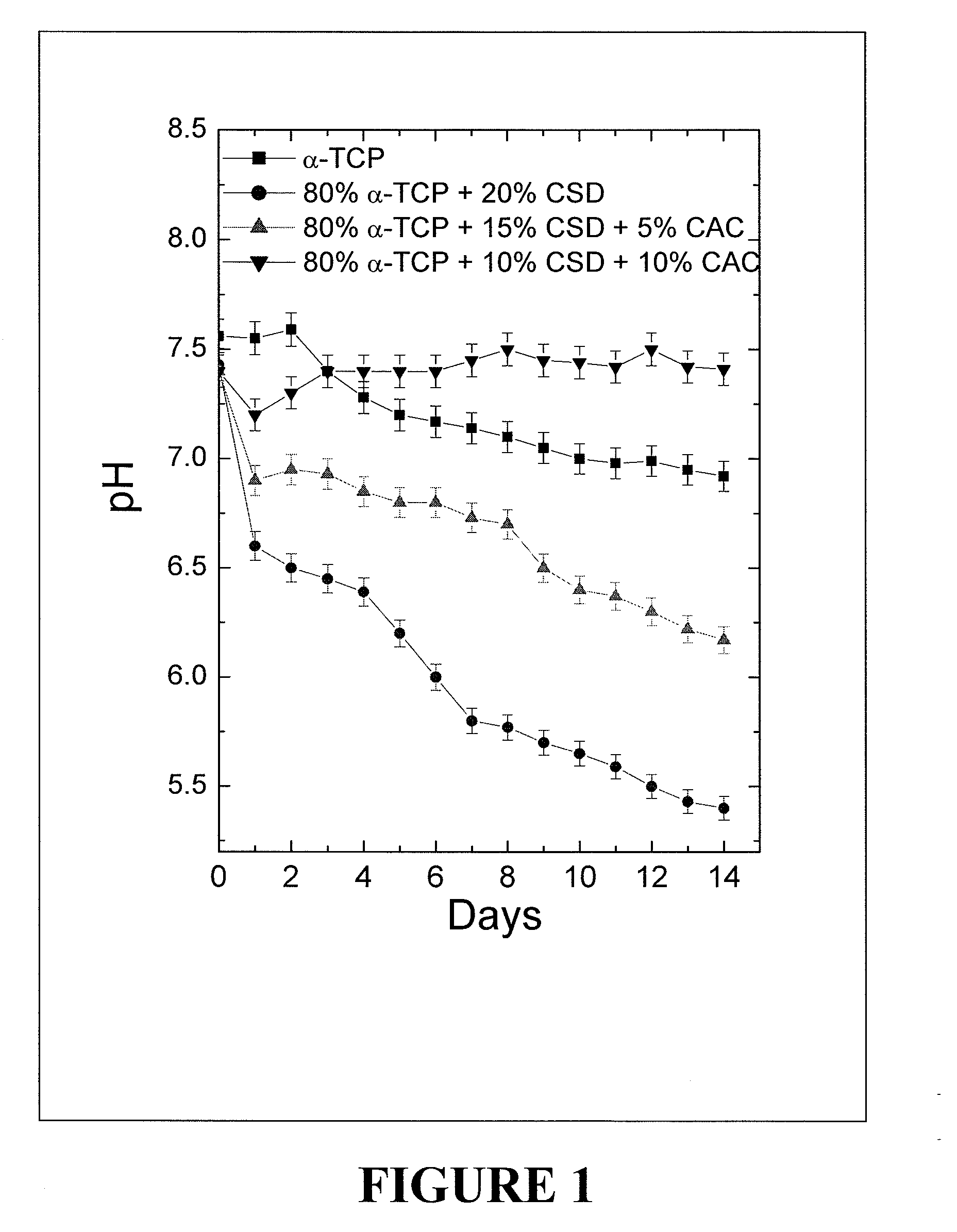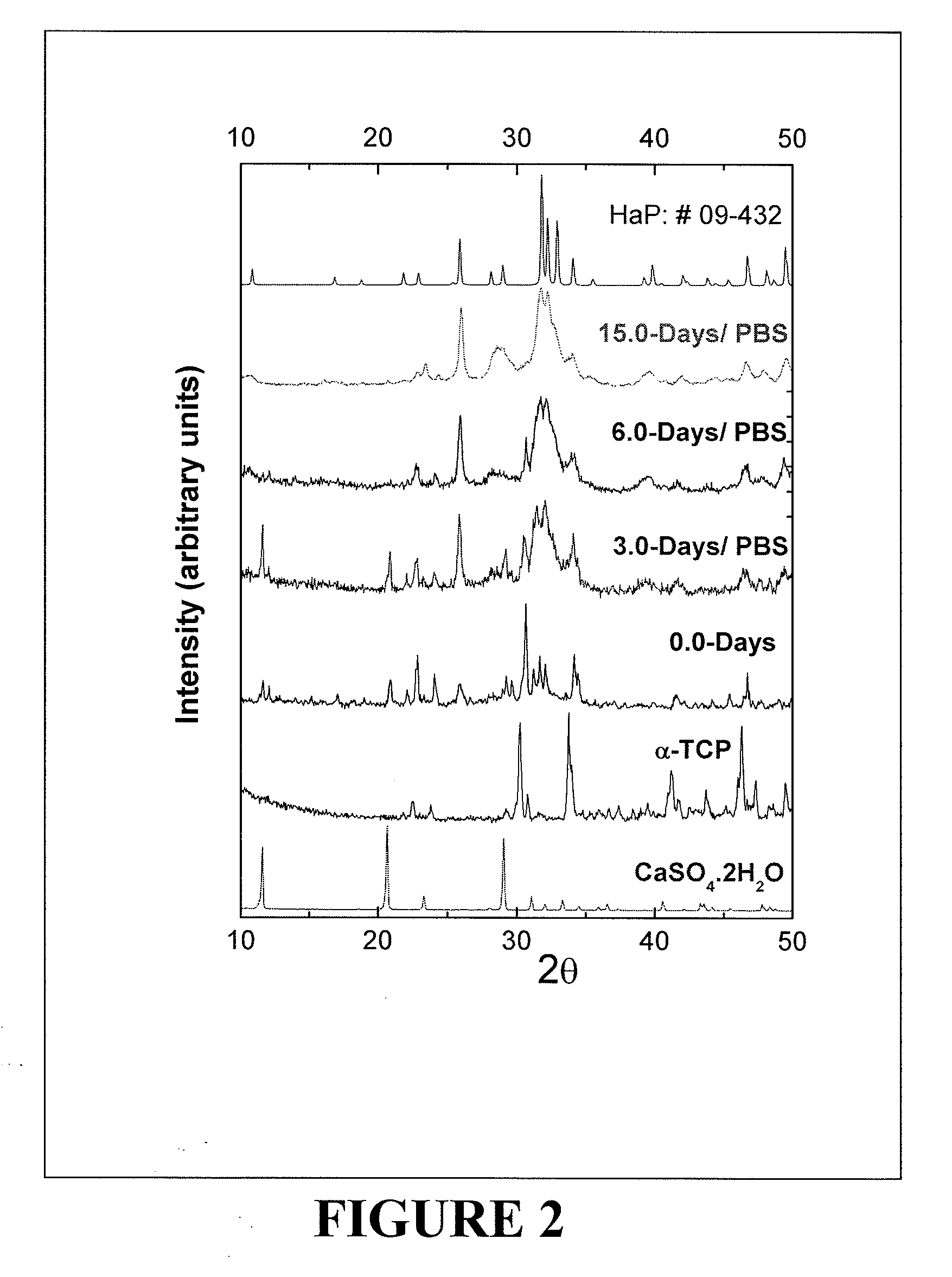Bone substitute compositions, methods of preparation and clinical applications
a technology compositions, applied in the field of bone substitute compositions, can solve the problems of low resorption rate, slow conversion, and long setting time of currently used cpcs
- Summary
- Abstract
- Description
- Claims
- Application Information
AI Technical Summary
Benefits of technology
Problems solved by technology
Method used
Image
Examples
example 1
[0067]A powder composition was prepared which included 80% by weight of α-Ca3(PO4)2, 10% by weight of CaSO4. 2H2O and 10% by weight of CaCO3. Thus, a 500.0 mg sample of the powder composition included 400 mg of α-Ca3(PO4)2, 50 mg of CaSO4, 2H2O and 50 mg of CaCO3). A solution of 0.25M Na2HPO4 (pH=9.0) was used as a mixing liquid. The powder to liquid ratio was 2.33 gm / cc. The initial (workable time) and final (hardening) setting time of the bone substitute composition obtained at 298K using the above mentioned powder to liquid ratio was 7 minutes and 18 minutes, respectively. As referred to henceforth, this bone substitute composition is described as CSD-CPH.
example 2
[0068]A powder composition was prepared which included 80% by weight of α-Ca3(PO4)2, 10% by weight of CaSO4. 2H2O and 10% by weight of CaCO3. Thus, a 500.0 mg sample of the powder composition included 400 mg of α-Ca3(PO4)2, 50 mg of CaSO4, 2H2O and 50 mg of CaCO3. 50 mg of Na2HPO4 anhydrous powder was mixed with this 500 mg of powder composition. A calcium phosphate particulate (CaP) solution based on 0.2M CaCl2 was used as a mixing liquid. The powder to liquid ratio was 2.33 gm / cc. The initial (workable time) and final (hardening) setting time of the cement obtained at 298K using the above mentioned powder to liquid ratio was 7 minutes and 18 minutes, respectively. As referred to henceforth, this bone substitute composition is described as CSCC-CPH.
example 3
[0069]A powder composition was prepared which included 80% by weight of α-Ca3(PO4)2, 10% by weight of CaSO4. 2H2O and 10% by weight of CaCO3. Thus, a 300.0 mg sample of the powder composition included 240 mg of α-Ca3(PO4)2, 30 mg of CaSO4, 2H2O and 30 mg of CaCO3). 50 mg of Na2HPO4 anhydrous powder. Then, 200 mg of recrystallized mannitol were mixed with this 300 mg of powder composition. A nano-CaPs solution based on 0.2M CaCl2 was used as a mixing liquid. The powder to liquid ratio was 2.33 gm / cc. The initial (workable time) and final (hardening) setting time of the cement obtained at 298K using the above mentioned powder to liquid ratio was 7 minutes and 18 minutes, respectively. As referred to henceforth, this bone substitute composition is described as PO-CPH.
PUM
 Login to view more
Login to view more Abstract
Description
Claims
Application Information
 Login to view more
Login to view more - R&D Engineer
- R&D Manager
- IP Professional
- Industry Leading Data Capabilities
- Powerful AI technology
- Patent DNA Extraction
Browse by: Latest US Patents, China's latest patents, Technical Efficacy Thesaurus, Application Domain, Technology Topic.
© 2024 PatSnap. All rights reserved.Legal|Privacy policy|Modern Slavery Act Transparency Statement|Sitemap



